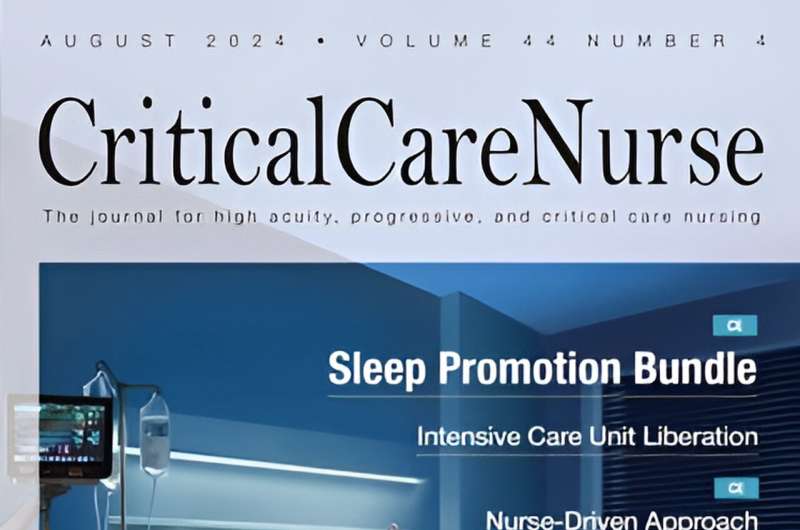This article has been reviewed according to Science X's editorial process and policies. Editors have highlighted the following attributes while ensuring the content's credibility:
fact-checked
proofread
Focused rounds address central line–associated bloodstream infection risks

Central catheter rounds serve as an important adjunct to bundles designed to prevent central line–associated bloodstream infections (CLABSIs), according to a study published in Critical Care Nurse.
The study details how a quality improvement project at Hospital of the University of Pennsylvania, Philadelphia, decreased the CLABSI rate in the cardiac progressive care unit from 1.86 to 0.0, despite a continued increase in central catheter days.
A new population of patients with pulmonary artery catheters was introduced to the unit during fiscal year 2017, increasing central catheter days, device use and the CLABSI rate. The number of central catheter days increased from 1,544 in fiscal year 2017 to 2,688 the following year. During the same time period, the CLABSI rate jumped from 0.65 to 1.86.
Despite adoption of standard evidence-based CLABSI bundles with a high compliance rate, CLABSIs continued to occur. The unit initiated nurse-driven central catheter rounds three times a week to reinforce elements of the bundles and to assess dressing placement and the condition of the catheter insertion site.
The rounds also facilitated open communication and education regarding central catheters between patients, nurses and physicians.
The article "Reducing Central Line-Associated Bloodstream Infections With a Multipronged Nurse-Driven Approach" includes the primary interventions identified through the standardized rounds. Co-author Linda Hoke, Ph.D., RN, AAGCNS-BC, CCNS, CCRN, WCC, is a unit-based clinical nurse specialist and serves on the cardiac progressive care unit's nurse leadership team.
"Nurses are at the forefront of preventing CLABSIs, and standardized nurse-driven rounds improved outcomes for our patients with central catheters," she said. "They should become part of every institution's CLABSI prevention efforts."
As part of improved dressing management, the unit began using a transparent dressing with chlorhexidine gluconate (CHG), instead of a standard gauze dressing, unless the insertion site had substantial bleeding. This new hospital practice reduced the number of dressing changes and decreased the risk for infection, while also increasing patients' comfort and saving time for nurses. It has since become the standard of care throughout the hospital.
Other interventions focused on monitoring the amount of blood on the dressing (leaving it intact if the blood did not extend beyond the edges of the CHG pad) and on addressing patients' skin allergies to prevent scratching and irritation.
As part of making these changes sustainable, ongoing education and mentoring was embedded into the unit culture. Weekly emails sent after rounds included photographs of dressings and insertion sites, with highlighted information for quick reading.
The increased communication led to the development of a step-by-step algorithm for dressing changes for nurses to use.
From July 2019 through June 2022, a total of 2,692 rounds were conducted for 707 patients with 3,064 central catheters. Over the three-year study period, two-thirds of the dressings were clean, dry and intact. The most common issues during the rounds were dressings that were not secure (9%) and dressings with visible blood (25%), of which most did not have blood beyond the edges of the CHG pad and thus did not require a dressing change.
The unit had no CLABSIs for fiscal year 2019, the initial year after initiation of the catheter rounds. During the following two years, a few CLABSIs occurred in patients with allergies who tore their dressings by scratching and touching the catheter insertion site and in patients whose dressings were not secure and fell off. The CLABSI rate returned to zero for fiscal years 2022 and 2023.
More information: Linda M. Hoke et al, Reducing Central Line–Associated Bloodstream Infections With a Multipronged Nurse-Driven Approach, Critical Care Nurse (2024). DOI: 10.4037/ccn2024493




















